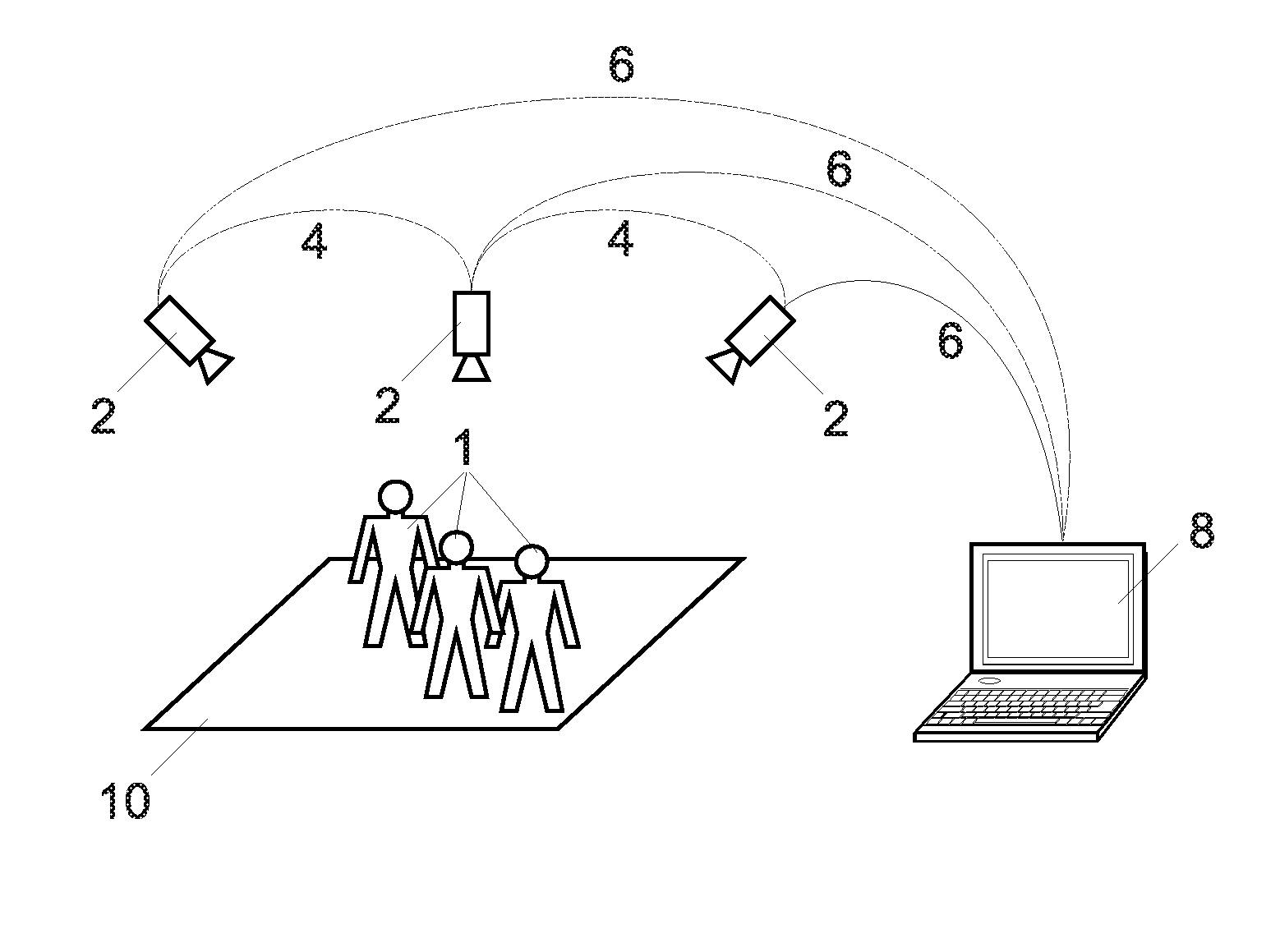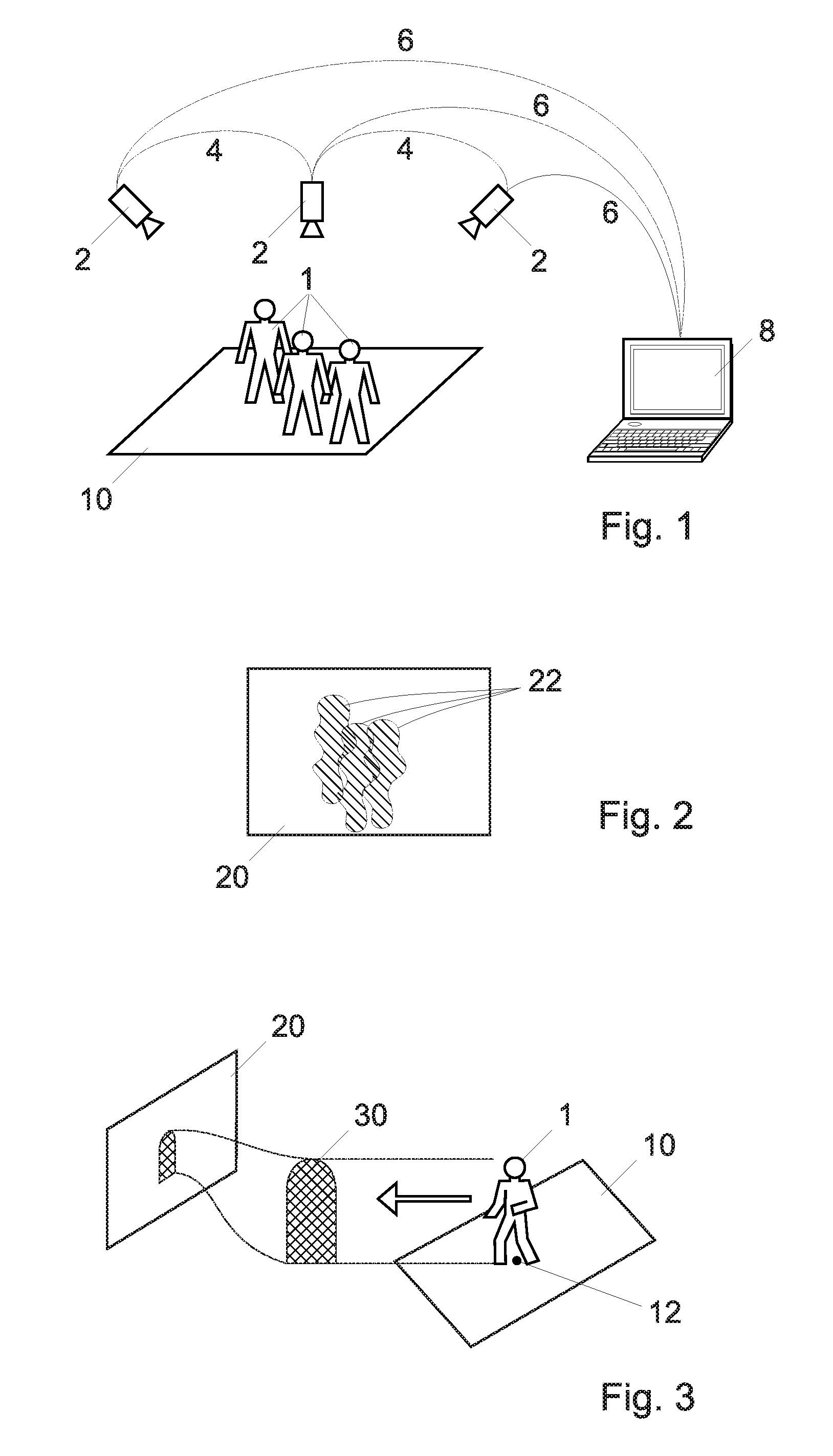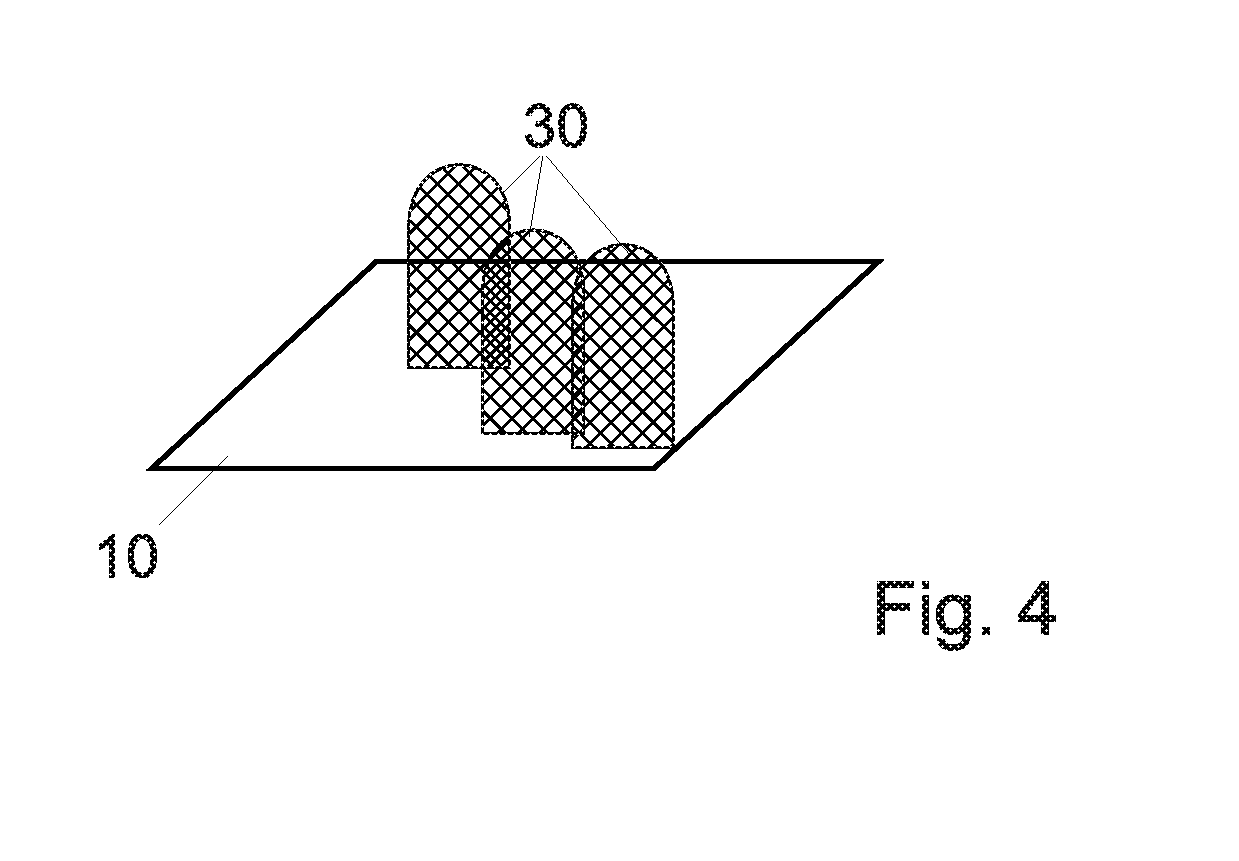Method and system for automatic objects localization
a technology object localization, applied in the field of automatic object localization, can solve the problems of complex automatic object localization, high hardware cost, etc., and achieve the effect of being flexible with respect to heterogeneous camera networks
- Summary
- Abstract
- Description
- Claims
- Application Information
AI Technical Summary
Benefits of technology
Problems solved by technology
Method used
Image
Examples
Embodiment Construction
[0050]FIG. 1 illustrates one embodiment of a system for detecting / localizing objects according to the invention. It comprises at least one or several cameras 2. The camera may be either analog or digital. If an analog device is used, the image is digitalized with means known by the man skilled in the art. The camera 2 can be planar and / or omnidirectional. In one embodiment IR cameras can be used. The cameras 2 can have overlapping field-of-views. Moving camera can also be used instead or in addition to static camera.
[0051]In the example of FIG. 1, there are three static cameras 2. When at least two cameras are used, they are pseudo-synchronized, in order to acquire quasi simultaneously images. In this application with the expression “cameras pseudo-synchronized” it is intended cameras that acquire images that are not precisely simultaneous but that can be considered as simultaneous, i.e. having a few frame delay, a few ms of difference. Cameras 2 are connected to an image processing...
PUM
 Login to View More
Login to View More Abstract
Description
Claims
Application Information
 Login to View More
Login to View More - R&D
- Intellectual Property
- Life Sciences
- Materials
- Tech Scout
- Unparalleled Data Quality
- Higher Quality Content
- 60% Fewer Hallucinations
Browse by: Latest US Patents, China's latest patents, Technical Efficacy Thesaurus, Application Domain, Technology Topic, Popular Technical Reports.
© 2025 PatSnap. All rights reserved.Legal|Privacy policy|Modern Slavery Act Transparency Statement|Sitemap|About US| Contact US: help@patsnap.com



